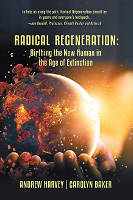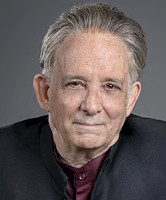
Image by Caity
Let us contemplate at least eight lessons animals can teach us, if we dare to open to them.
1. Animals can teach us radical forgiveness.
Many domestic animals demonstrate an attitude of forgiveness toward humans even after being horrifically abused by humans. The American pit bull terrier offers the most stunning example. Rescuers of pit bulls report that in the majority of instances of neglect and abuse, when the human mind reasons that an animal that has experienced such mistreatment should only fight back in hostile rage, the pit bull is gentle, kind, and forgiving and demonstrates a general willingness to remain with humans, even in this situation. It is as if they know how tortured and distressed we are, and they have compassion for us.
2. Animals can teach us unconditional love.
Their love is a given, and it’s not dependent on anything we do or don’t do. They love wholly, innocently, finally, and forever. They demonstrate the clearest signs we could have of what mystics know is the infinite love at the core of the godhead.
3. Animals can teach us profoundly balanced, tender, and embodied love.
Human beings have oversexualized eros. Animals guide us into a full bodied, full hearted, non-possessive, luminously intelligent and divinely tender eros that is at once absolutely spiritual and cellularly radiant. This is embodied, divine love, and it is this kind of love that we find in the most whole and evolved saints such as Rumi and Kabir. We can find it in our amazement and awe at the tabby purring against us, or the supremely trusting dog lying with its ear against our chest listening to our heartbeat, or in the blue jay singing for us alone on a sun-drenched windowsill, or in a white lion stepping out of the dark bush into moonlit shadow, still and ablaze in majesty.
4. Animals can teach us the surrender of radical acceptance.
Animals can teach us radical acceptance of the rhythms of life and death, light and dark—that radical acceptance that mystical systems celebrate as the gateway into enlightenment. Animals are masters of surrender—masters of the secrets of being. While animals do not long for or welcome death and generally resist it, they also instinctively know that it is an inherent part of life, and they tend to meet it with fearless grace.
5. Animals teach us to bless, embrace, and integrate our animal nature.
Jungian commentator Shamdasani says that Jung saw that one of the crucial tasks of complex psychology is that of “coming into a right relation with the animal . . . there could be no individuation without establishing a new relation to animals.” In fact, Jung made clear that “a critical task of analysis is that of ‘becoming animal.”
Jung understood too something of vast significance for us in our journey to purify our shadow of rejection of our animal nature. He understood that in nature the animal is “a well-behaved citizen . . . it does nothing extravagant. Only man is extravagant. So if you assimilate the character of the animal, you become a peculiarly law abiding citizen.”
We believe that we must now build on Jung’s crucial insights to help birth on the Earth human beings who are whole because they have blessed, embraced, and integrated their animal nature and realized in the deepest sense that this leads not as the patriarchal traditions have implied to surrender to chaotic instinct, but to a profound alignment with the subtle balancing laws of nature. It is this new human being that our book is dedicated to, for we have experienced with Jung the joy and groundedness that are engendered when the so-called civilized sides of ourselves are married to our own inner divine animal.
6. Animals are natural masters of self-protection and the establishing and guarding of boundaries.
Too often patriarchal tradition has characterized these qualities as blind territorial instinct. In fact, as the indigenous traditions know, such qualities are essential for our full human growth and survival, for without being constantly attentive to the signals and subtle movements of energy within our animal nature, the naturally dissociated, even hubristic nature of our minds can lead us into the most dangerous situations and the most lethal forms of abuse. If humanity does not heed the ever-shifting wisdom of its animal nature, it will continue acting on its disastrous, dissociative fantasy of dominating nature, thereby ensuring its own destruction and the destruction of a majority of the natural world.
If we were fully attuned to our animal nature, would we build monstrous, sterile cities where people live lives of lonely alienation? Would we spend hundreds of billions of dollars on a delusional vision of space travel or colonizing Mars when our own planet is convulsed in crisis? Would we refuse to listen to the warnings of scientists in their increasingly apocalyptic clarity about climate change? Would we continue to turn a blind eye to the epidemic of child abuse, rape, and the degradation of LGBTQ individuals? Would we blindly worship the potential benefits of artificial intelligence and embrace a world run by robots? Would we allow the continuing genocide of animals if we realized that what we are also killing is an inestimably precious part of ourselves which, when gone, will leave us utterly at the mercy of the madness of our dissociated minds and ravaged hearts?
7. Animals also teach us how to rest in being so as to refuel for becoming.
They never waste their energy, and they love silence and contemplation and non-conceptual immersion in the real. This is the state that our various mystical systems struggle against great odds to initiate us into. And we have masters as great as Jesus or the Buddha all around us, if we dare to look, showing us how being itself can sustain, inspire, and invigorate us through everything. To reiterate Eckhart Tolle, he has had many Zen masters in the form of cats.
As we navigate the global dark night of all species and struggle against immense odds to live and act from our deepest wisdom, we will need to learn how to rest so as to refuel for what is bound to be a long and grueling journey toward a new world. What better teachers could we have to help us incarnate this marriage of opposites than the animals who do it so effortlessly?
8. Animals can teach us to play.
Montaigne wrote in the Apology for Raymond Sebond, “When I play with my cat, who knows if I am not a pastime to her, more than she is to me?” Montaigne’s own work shows us the delicious freedom that can come to someone eased out of his or her self-seriousness to understand what the greatest mystics know: that in the deepest sense the universe and life are games played by divine reality. As Heraclitus said, “Life is a child playing draughts.” And as Kabir wrote, “In the beginning. . . . this whole universe is endless dance.” The genius for play possessed by animals can be our most direct guide into this blossoming bliss.
Seven Major Resistances and Blocks
Andrew sent a draft copy of the eight lessons that animals can teach us to two close friends—a young Maori shaman and a famous American Jungian psychoanalyst. The responses were fascinating, to put it mildly. The Maori shaman wrote back tersely, “Yes, yes, yes—our tribe has always known this. Good thing you lot are catching up. Hooray!” The famous Jungian psychoanalyst wrote, “I am sorry to say, dear one, that what you have written is pure anthropomorphic projection, back to the drawing board!”
Andrew then sent the psychoanalyst’s response back to the Maori shaman. He replied at greater length this time: “I wish I could say I was shocked. The resistances to waking up to what animals truly are and what they can teach us are rampant in nearly every Western intellectual I’ve ever met, even or perhaps especially in, the ones who are most supposedly open to indigenous wisdom. Most Western intellectuals and seekers who think they are open to and instructed in indigenous wisdom—because they have been to a few weekend workshops with would-be shamans and can play around with a few concepts—have hardly begun to dissolve in themselves. The resistance is inseparable from their cultural and spiritual training.”
Out of the long discussions that arose from these divergent responses, we created a list of the following seven resistances that we identified in ourselves as having been profound blocks to our own awakening to the message we are proposing in this book:
-
Religious arrogance—All religious traditions are biased against animal consciousness
-
Scientific arrogance—Animals are inferior beings and have no feelings. We should study them only to discover how they can serve us.
-
Technological arrogance—We worship our technological powers, which seem to prove our superiority but which have shown clearly the potential to destroy us in every way.
-
Our inherent state of anxious and depressed separation divorces us from the wisdom of being that animals radiate as we give preference to doing over being.
-
Our terror of love and of the rapture of responsibility and protection that arise from it; our fear of the commitment of receiving the overwhelming love of animals; our terror of being revealed to ourselves as unloving, disembodied, and dissociated; our terror of having our human fantasy of superiority exposed as the vain delirium that it is and so being compelled to rethink everything about our relationship with the creation.
-
Our fear of silence. Animals communicate largely in silence, non-conceptually, and this makes it impossible for us to do what we love to do, which is to create despotic games of power and control through words. So animals challenge our addiction to language as the only way to establish control in our world. Ramana Maharishi said, “Silence is unceasing eloquence.”
What animals can help us learn is what all mystics know to be essential—how to silence our whole being in Being itself and so be constantly receptive to the instruction that is always streaming toward us, what Rilke called, “the news that is always arriving from silence.”
-
As part of our addiction to doing, we all create vain fantasies of self-importance, and as anyone who has a deep relationship with an animal knows, being and playfulness threatens to dismantle any false grandeur we ascribe to ourselves. This scares us because we are afraid that if we truly surrender to the mastery of being that animals have and to the joyful playfulness for no reason that bubbles from it, the whole edifice of our false self will begin to crumble and leave us defenseless in the world lunatic asylum where everyone thinks they’re so important.
Animals Have Innate Knowing
Researcher and author Rupert Sheldrake has written four books on animals, including Dogs That Know When Their Owners Are Coming Home. In the book he asks: “Many people who have owned a pet will swear that their dog or cat or other animal has exhibited some kind of behavior they just can’t explain. How does a dog know when its owner is returning home at an unexpected time? How do cats know when it is time to go to the vet, even before the cat carrier comes out? How do horses find their way back to the stable over completely unfamiliar terrain? And how can some pets predict that their owners are about to have an epileptic fit?”
Sheldrake’s famous 2005 paper “Listen to the Animals: Why Did So Many Animals Escape December’s Tsunami?” highlights the fact that many animals escaped the great Asian tsunami on Boxing Day, 2004. Elephants in Sri Lanka and Sumatra moved to high ground before the giant waves struck; they did the same in Thailand, trumpeting before they did so. “To explore the potential for animal-based warning systems would cost a small fraction of current earthquake and tsunami research,” says Sheldrake. “By doing this research we would be sure to learn something, and could probably save many lives.”
David Abram reminds us in Becoming Animal that to be human is to have very limited access to what is. Clearly, other animals have untold universes of wisdom to teach us. We believe, as do a host of world-renowned animal researchers and scientists, it is now time to kneel at the feet of myriad creatures to become students of animal consciousness so that our own individual and collective consciousness may be radically transformed.
Our deepest heartfelt desire in writing this book is to liberate animals and to learn from them, but we also know that without the healing of the tortured animal within us and the visceral experience of our sacred relationship with creation, neither is possible.
Copyright 2022. All Rights Reserved.
Printed with permission of the publisher.
Article Source:
BOOK: Radical Regeneration
Radical Regeneration: Sacred Activism and the Renewal of the World
by Andrew Harvey and Carolyn Baker What is being made crystal clear is that humanity stands at a monumentally fragile threshold with two stark choices placed before it in a situation of complete uncertainty. Those choices are: 1) To continue to worship a vision of power, totally distanced from sacred reality 2) Or to choose the path of submitting bravely to the alchemy of being transfigured by a global dark night event that shatters all illusions but reveals the greatest imaginable possibility being born out of the greatest imaginable disaster.
What is being made crystal clear is that humanity stands at a monumentally fragile threshold with two stark choices placed before it in a situation of complete uncertainty. Those choices are: 1) To continue to worship a vision of power, totally distanced from sacred reality 2) Or to choose the path of submitting bravely to the alchemy of being transfigured by a global dark night event that shatters all illusions but reveals the greatest imaginable possibility being born out of the greatest imaginable disaster.
If humanity chooses the second path, which is what is being celebrated in this book, then it will have trained itself in the new radical unity necessary to weather even worse crises.
For more info and/or to order this book, click here. (new 2022 updated and expanded edition) Also available as a Kindle edition.
About the Authors
 Andrew Harvey is an internationally renowned religious scholar, writer, teacher, and the author of more than 30 books. The founder and director of the Institute for Sacred Activism, he lives in Chicago, Illinois.
Andrew Harvey is an internationally renowned religious scholar, writer, teacher, and the author of more than 30 books. The founder and director of the Institute for Sacred Activism, he lives in Chicago, Illinois.
Carolyn Baker, Ph.D., is a former psychotherapist and professor of psychology and history. The author of several books, she offers life and leadership coaching as well as spiritual counseling and works closely with the Institute for Sacred Activism. She lives in Boulder, Colorado.



























